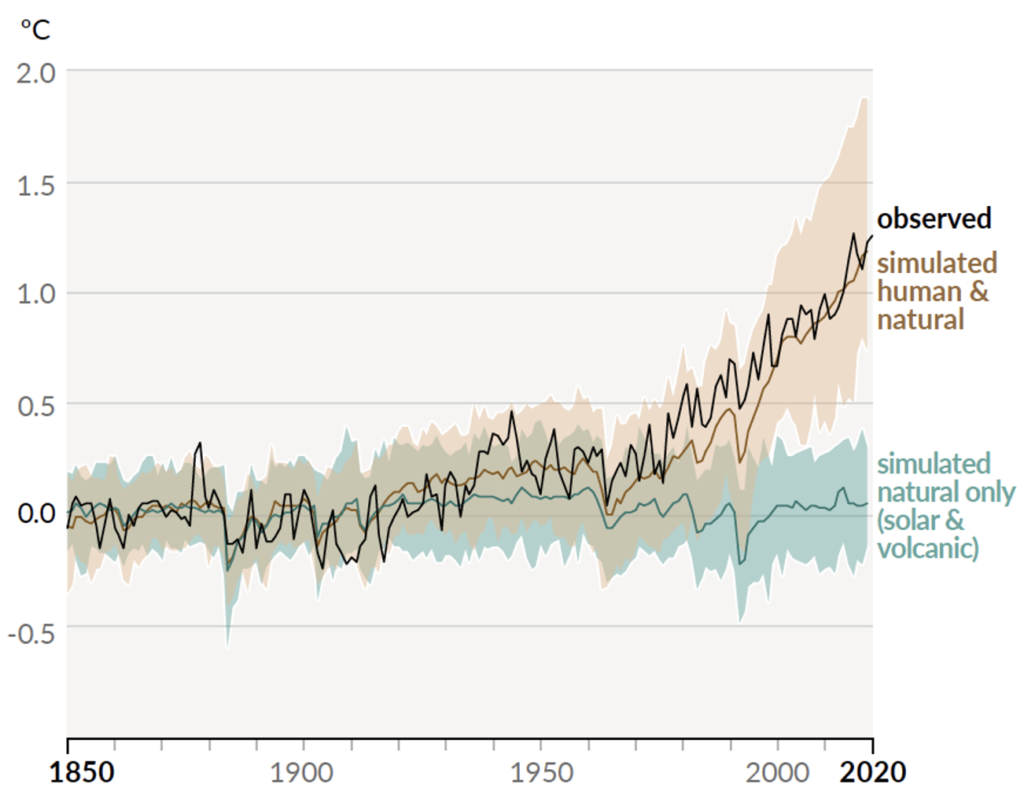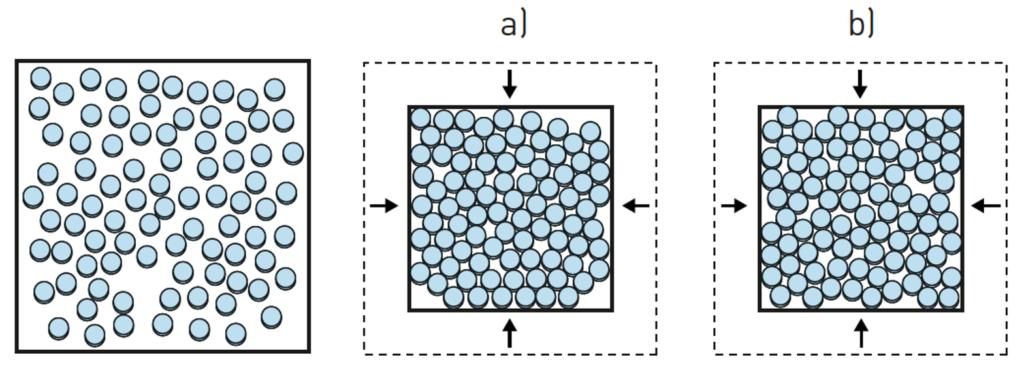I have to admit that I have a general dislike for awards and medals in science, as they always seem too binary (there are winners and losers), scientists don’t do science to get medals, and the whole scientific enterprise is collaborative (it can be hard to separate and assign value to different contributors). Issac Newton – who never won a Nobel Prize (they hadn’t existed in his time, or he surely would have) – captured this latter sentiment in his famous quote about standing on the shoulders of giants. When I was asked to present an overview of the Nobel Prize for Physics for a general audience (normally a job for Physics faculty, but this year the topic fell more in our department) I had to reconcile these thoughts with what I do think is the important aspect of awards: the value of highlighting human achievement in science for others. People connect with other people and with human narratives. In a world where we need good role models, getting some really good scientists in the spotlight can’t be a bad thing!
The Physics prize in 2021 was awarded to two scientists who worked in climate science (Syukuro Manabe and Klaus Hasselmann) and a third (Giorgio Parisi) who worked broadly in an area called ‘complex systems’, of which the climate system is an important exemplar. Complex systems are exactly what they sound like: they describe phenomena that are hard to study and model because they’re really complicated. While the exact definition of what a specific phenomena has to have to be considered a ‘complex system’ is disputed – I actually bought a book about them and it devotes a lot of pages to defining what complex systems are – the most important things to me in the context of this prize are that they contain many different parts (which span a wide range of scales) and that they exhibit phenomena that are ’emergent’. What this means in practice, is that you can’t easily apply the principles of reductionism to study them: if you take just a part of the system to look at in detail, the phenomena you’re studying – which only emerges due to the complex interaction of all the parts – disappears!
I think that understanding the ‘climate system’ is one of the most important practical things people can study today. One of the goals in climate science is to build ‘models’ of Earth’s climate that can produce skillful forecasts of the future (given collective human behavior – or at least our carbon emissions – as input). The better our forecasts, the better we can make plans, at least in theory. In practice, the words of another Nobel laureate, Sherwood Rowland, come to mind: ‘What is the point of having developed a science well enough to make predictions if, in the end, all we’re willing to do is stand around and wait for them to come true?’ This question is something that I do worry about, but we’ll leave that thorny issue to the side for now.
Sticking with the science, the words ‘model’ and ‘skillful’ are important to understand here, so I’ll briefly describe what these mean. In my Introductory Earth Science class, I like to explain what a scientific model is using our guinea pig: Bonnie. I show the students a picture of Bonnie (she is very cute), and ask how they would calculate her average density. Inevitably, one student will say that they’d get her mass by weighting her, estimate her volume by submerging her in water and measuring the volume of displaced water, then get the density from mass/volume. OK, I’ll say, that works but you’re never allowed near my guinea pig! How would you do this *and* keep her alive? One solution is to approximate her with a cylinder (as she’s roughly cylindrical), then measure her length and circumference to estimate the volume. This step – representing her by something more simplified – demonstrates what a model is. Climate models are complicated representations of the climate system on computers (a very different beast from our cylinder model), but they also make simplifying approximations. Therefore, all models are wrong in the sense they are only approximations of reality (Bonnie isn’t actually completely cylindrical), but some are ‘skillful’, which in the context of weather and climate forecasting, means they can make useful predictions. A touchstone of scientific knowledge and understanding is the ability to predict accurately the outcome of an experiment. Model skill measures this ability for weather and climate forecasting.
There are different types of weather and climate model, but to get a sense of how complex the emergent phenomena are, nothing beats a movie. Click on the embedded link below to see a full year of wind direction and wind speed from a ‘medium range’ weather forecast model – the Global Forecast System – operated by NOAA. You see lots of synoptic-scale weather patterns that change in space and time and, if you watch long enough, you can see hurricane season in the North Atlantic. Hurricanes are an example of emergent phenomena: no-one wrote code directly into the computer model to explicitly start a series of hurricanes during hurricane season, they emerged based on the physics and data that the model captures or assimilates.
A fundamental part of climate models is the description of the ‘radiative transfer’, which describes how electromagnetic radiation (energy) from the Sun and the infrared energy emitted from Earth’s surface is absorbed, radiated, and scattered by gases in the atmosphere. The complete process is quite a bit more complicated than described by the Greenhouse effect as described in most introductory Earth Science textbooks, which was understood by the end of the 19th Century. The advance shown in the figure below for 1967 represents the contribution from Syukuro Manabe, who included the interaction between radiative transfer and convection, and the effect of water vapor in a more complete description. This interaction is an example of the type of feedback that is characteristic of complex systems and the climate.

I’ve referred to both weather and climate models, and used the terms somewhat loosely, partially because the models are based on a lot of the same physics, so climate models can be thought of as weather models run over long time-scales (although there are several really additional physical processes that only become important over long time scales). However, while ‘weather’ refers to the short-term state of the atmosphere, ‘climate’ refers to long-term averages of the weather. Weather is chaotic – famously popularized by the ‘butterfly effect’ – which is why you can’t find weather forecasts that go that far into the future (about the longest that forecasts are skillful is around 10 days). Nevertheless, climate forecasts are skillful over very long time periods. The second Nobel laureate, Klaus Hasselmann, demonstrated how to treat the chaotic weather as ‘noise’ superimposed on longer-term climate trends. His work has been critical in being able to use climate models to explore how the climate system responds when human activities ‘kick the system’. Nowadays, the fact that climate models – when used to ‘predict’ the present – are skillful in reproducing the observed long-term increases in temperature, but only when we include human emissions, is an important piece of evidence for human-caused climate change (see the figure below).

State-of-the-art climate models capture physics that occur over 14 orders-of-magnitude in both spatial and temporal scales. The third scientist sharing the Nobel prize, Giorgio Parisi, contributed generally to the study of complex systems, with his work covering a wide-range of scales. He is famous for developing an understanding of how what seem like completely random phenomena are in fact governed by hidden rules. Much of his work was on very small-scale phenomena, and specifically on how particles in glass are arranged. When a liquid freezes rapidly – as an Earth Scientist I think of a lava erupted out of a volcano – the particles that were free to move (described by the figure on the bottom left) become arranged in an apparently disordered arrangement (a). If the experiment were repeated, the arrangement would not be the same (b). Parisi studied these systems and found a symmetry that the structures obey when explored over different scales. His work on these scales has applications to climate, tying the different prizes together.

State-of-the-art weather and climate models rely on the insights of these three scientists – as well as the work of thousands of others – in simulations that, in terms of size and complexity, are among the largest computer simulations being run today. These are also ‘Big Data’ models, as they ‘assimilate’ data from a wide variety of both ground- and satellite-based measurements. In ‘A Vast Machine: Computer Models, Climate Data, and the Politics of Global Warming‘, Paul Edwards argues that fundamental physics advances, steady advances in computational capability, and advances in new types of measurement (especially those above the ground) have all played key roles in producing the skillful weather and climate forecasts we have today.
I’m not a climate scientist and, in fact, SMU is currently looking to hire one as part of a new research cluster initiative. If the climate scientist were here already then they’d have been the obvious person to present the overview instead of me! However, I agreed to do it because my research does involve the atmosphere, albeit from the perspective of low-frequency acoustic waves. From this unusual perspective, the atmosphere is both a challenge and an opportunity. The challenge comes from the fact that the waves are sensitive to atmospheric effects that are ‘unresolved’ in numerical weather models, which makes it more difficult to use the waves to study the corresponding sources of low-frequency sound (because we cannot remove the imprint of the unresolved atmosphere). The opportunity comes from the fact the waves encode information about the atmosphere as they propagate. This information includes the unresolved parts of the atmosphere, and details on meteorology at higher altitudes of the atmosphere than are typically sampled through other means. One of my long-term hopes is that we can exploit these low-frequency acoustic waves to provide unique information that atmospheric scientists can start to include in improving their models. We’re not there yet, but my hope is that this could be another type of above-ground measurement (those critical ones that Edwards discusses in A Vast Machine) that makes our models more skillful, particularly as meteorologists are explore including the effects of coupling between the troposphere and stratosphere into models.
For more information on the Nobel Prize for Physics, 2021, visit: https://www.nobelprize.org/prizes/physics/2021/summary/
To see the current state of the atmosphere on the GFS model (via a very cool website), see: https://earth.nullschool.net/